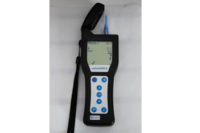This article will provide an overview of the serious nature of infectious diseases in the built environment and will be reviewed for clarity in five key reader objectives:
- Today’s indoor environmental pollutants bring greater risk threats to all public spaces
- Preliminary facts about infectious and re-emerging diseases in the environment
- Due diligence and management of risk
- Trends
- Recommendations
Today’s indoor environmental pollutants bring greater risk threats to all public spaces
With the advent of exotic pathogenic threats making headlines worldwide, the bugs and superbugs that are really impacting public spaces in the USA are not so exotic. The typical superbugs known as Methicillin Resistant Staph Aureus (MRSA) and Clostridium Difficile (C Diff), which are of considerable clinical interest in the healthcare arena, have now traveled into community and public spaces such as shopping malls, restaurants, hospitality settings and transportation. Basically, the non-medical areas have become a favorite stopping place for pathogenic pollution and there are really no aggressive contingency plans in place to proactively address the serious nature of this issue.
Facts about infectious and re-emerging diseases in the environment
There are several factors which contribute to the emergence of new infectious diseases or the re-emergence of “old” infectious diseases. Some of these diseases occur from natural processes such as the evolution of pathogens over a period of time, but many are a result of human behavioral practices in work and in everyday life. Our interactions with the environment have radically changed in the last century alone. We have a significant population growth with rural populations migrating to cities and suburbs, and as a society we are now very high tech—able to engage in international travel from one continent to another in a single day.
Another critical factor especially impactful, is the re-emergence of microorganisms to antibiotics. Widespread inappropriate use of antibiotics has created increasingly resistant pathogens, hindering much of the progress made against infectious organisms in the last 50 years.
The World Health Organization ranks misuse and inappropriate use of antibiotics as one of the three greatest threats to human health. Additionally, due to misunderstanding of medical nomenclature, many families are choosing not to vaccinate their children against childhood illnesses such as measles and pertussis, just to mention a few. As a result, these diseases and others are re-emerging into the mainstream of life once again.
Bacteria and viruses can and frequently do change over time and develop a resistance to these drugs. Drugs that were effective in controlling disease in the past are frequently no longer useful or less impactful in killing germs. Mutations of the pathogenic DNA allows the “bug” to become less vulnerable or susceptible to the properties of the antibiotics and proliferation does occur frequently. Additionally, with the advent of more waterborne and airborne pathogens, these microorganisms tend to unite and form a small army known as a biofilm. Biofilms are microorganisms which commonly attach to living and nonliving surfaces such as walls, surfaces, ceilings, equipment etc. The biofilm membrane is very difficult to penetrate, and microorganisms inside the biofilm become almost impossible to eliminate.
Climate change is increasingly becoming a concern as a factor in the emergence of infectious diseases. As earth’s climate warms and habitats are altered, diseases can spread into new geographic areas. One way this can occur is through mosquitoes, transmitters of many infectious diseases, as they expand their range into new areas.
The case of SARS (severe acute respiratory syndrome), is another critical example of how quickly infectious diseases can spread around the globe as a result of our high tech society and air travel. SARS emerged in China in 2002 and spread rapidly to other countries within the area.
It then traveled to Canada via air travel. An unprecedented global response arrested the spread of the causative virus, but not before 8000 people had been infected and 800 died.
Due diligence and management of risk
Public health and sanitation measures have tried to minimize dissemination and human exposure to many pathogens spread by traditional routes such as water or preventable by immunization or vector control such as mosquitoes, etc. Pathogens themselves can and usually still remain in reservoir hosts or in the environment, or in small pockets of infection.
Without a proactive preventive program in place that is strictly monitored, tracked and trended, these infectious diseases are frequently able to take advantage of the opportunity to re-emerge. In the healthcare industry alone, one out of four and 24 percent of all hospital litigation is for Healthcare Acquired Infections (HAIs).
Trends
Trends in factors favor microbes and their exponential growth. New threats will emerge and many will be zoonotic or animal-borne. The healthcare industry will continue to have a critically important role in the recognition of emerging diseases as will public policy to research and implement best known practices.
The historical play of the people population regarding work, travel, hobbies and animal engagement will additionally be an important factor. Surveillance is critical to achieve public health security. The ability of foreign countries improvement of surveillance capacities will be tantamount to the success of security, protection against outbreaks and minimizing exposure risks across the broader global spectrum.
Recommendations
Preparations of early warning of emerging and re-emerging infections for many types of occupancy loads depend on the ability and skill levels of those experienced enough to identify the risk or potential of risk as early as possible.
Assess the vulnerability of spaces, the historical data from the region one resides, and what is prevalent at the current time.
Keep transportation systems in mind even if these areas are not a part of a company’s core strategy.
Review current policy and applications annually in addition to when threats and potential threats occur.
Work with those who have experience and expertise (ten years or more with the proper academic credentials) in the area one is working to achieve the desired outcomes.







Report Abusive Comment